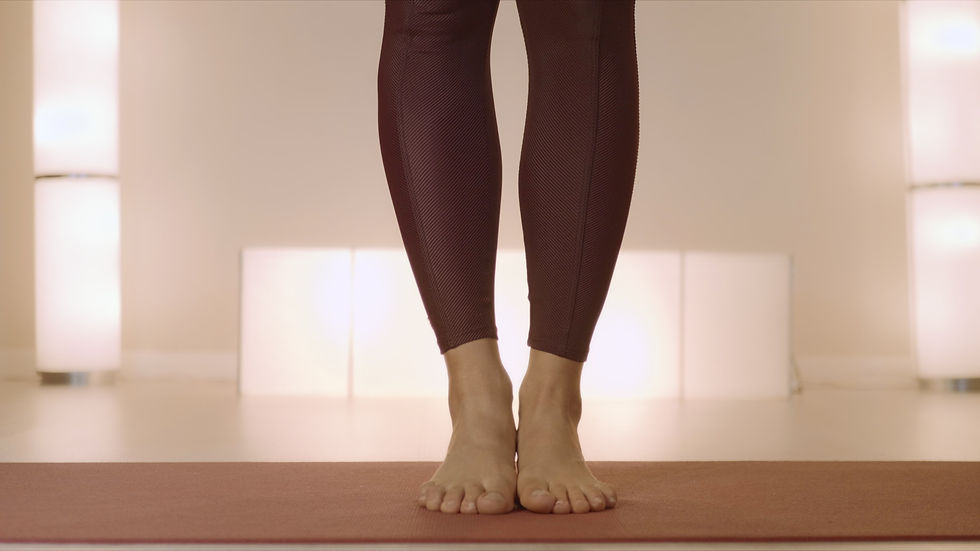
In the world of Pilates, there's a fascinating historical perspective to consider. Joseph Pilates, the founder of this incredible method, allegedly designed his exercises with a primary focus on parallel leg positions. It wasn't until after his passing that Romana Kryzanowska introduced rotational elements to the Pilates repertoire. This leads us to a crucial question:
What are the benefits and advantages of working with parallel legs in Pilates, and how does it differ from the more traditional rotational approach?
Returning to the Basics: Parallel Leg Work First and foremost, let's delve into the concept of working with parallel legs in Pilates. In parallel leg positions, your feet are aligned and facing forward, much like the natural stance when you stand or walk. This fundamental approach has its own set of advantages, particularly for beginners.
Pelvic Floor Engagement: When you perform Pilates exercises with parallel legs, you encourage a strong engagement of the pelvic floor muscles. This is especially beneficial for newcomers who may be working on strengthening these muscles. Parallel leg positions provide stability and support for the pelvic floor, helping individuals build a solid foundation.
Functional Training: Consider the everyday activities we engage in, such as walking or standing. These actions predominantly involve parallel leg positioning. Therefore, for functional training that mimics real-life movements, working in parallel is a natural choice. It enhances the muscle memory required for activities outside the Pilates studio.
Understanding Rotation in Pilates: A Challenge for the Pelvic Floor and More
On the flip side, traditional Pilates incorporates rotational movements into exercises, introduced by Romana Kryzanowska and others. While these rotations offer their own set of benefits, they engage different muscle groups and emphasize core stability in unique ways.
Variation and Challenge: Rotational movements in Pilates provide a welcome variation and challenge. They target muscles from different angles, offering a well-rounded workout. As students progress in their practice, incorporating rotation can be highly beneficial for continued growth and development.
Core Strength and Pelvic Floor: Rotation engages the oblique muscles and deep core muscles, helping to sculpt and strengthen the core area. In addition to these core muscles, rotational movements also activate the muscles of the lower back and the muscles along the spine.
The Lateral Rotator Group: Furthermore, rotational movements in Pilates involve the use of the lateral rotator group, which is a group of six small muscles of the hip that externally (laterally) rotate the femur in the hip joint. This group consists of the following muscles: piriformis, gemellus superior, obturator internus, gemellus inferior, quadratus femoris, and the obturator externus. These muscles play a crucial role in enabling the hip to rotate during various Pilates exercises that involve rotation.
The Challenge for the Pelvic Floor: It's important to note that rotational movements can challenge the pelvic floor muscles as well. While this can be a good thing for those with a strong pelvic floor, beginners who may not have sufficient strength in this area might find these exercises challenging. In such cases, it's advisable to prioritize parallel leg positions initially to build a solid foundation before venturing into rotational movements.
By acknowledging the role of the lateral rotator group and other muscles involved in rotation, we gain a comprehensive understanding of the benefits and challenges of Pilates exercises. This knowledge helps us tailor workouts to suit individual needs and goals, ensuring a safe and effective Pilates practice.
Parallel vs. Rotation: A Matter of Progression
Ultimately, both parallel and rotational movements have their place in Pilates. It's not a matter of one being superior to the other but rather a question of progression. For beginners, parallel leg positions are often the most appropriate starting point. They offer stability, promote pelvic floor engagement, and establish a strong foundation.
As students advance in their Pilates journey, incorporating rotational movements becomes essential. These movements add complexity and variety to workouts, targeting different muscle groups and enhancing core strength.
In conclusion, the choice between parallel and rotational movements in Pilates depends on your level of experience and your specific fitness goals. Embracing both approaches ensures a well-rounded practice that nurtures your body's capabilities. Remember, Pilates is about continuous growth, and there's always room for exploration and progression in this dynamic discipline.

Comments